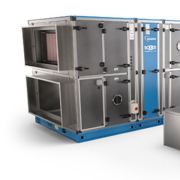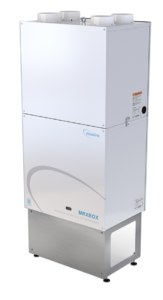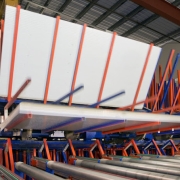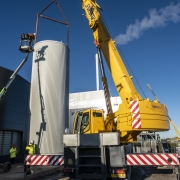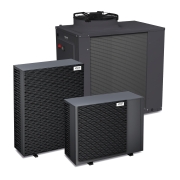Indoor air quality and ventilation manufacturing specialist Nuaire is pleased to announce Passivhaus certification has been achieved on BPS Passivhaus air handling units (AHU) and XBC Passivhaus packaged heat recovery units.
With buildings contributing significantly to harmful carbon emissions, Passivhaus provides proven solutions to deliver net-zero-ready buildings that also provide a high level of occupant health and wellbeing. Passivhaus adopts a whole-building approach with clear, measured targets, focused on high-quality construction, certified through an exacting quality assurance process. For a building to achieve the Passivhaus Standard in the UK, a mechanical ventilation system with highly efficient heat recovery is considered a core principle.
Rigorously independently tested under realistic conditions to ensure they meet the strict Passivhaus efficiency, thermal comfort, and indoor air quality criteria, Nuaire’s BPS Passivhaus AHUs in sizes 12,17, 22, 32 and 42, and XBC Passivhaus packaged heat recovery units in sizes 55 and 65 have now been certified as Passivhaus compliant components.
BPS Passivhaus is a range of high specification packaged AHUs designed and engineered to provide an efficient, high performing, compact solution for a multitude of applications. Efficiency comes from a dual compressor system that uses less energy than one single large compressor, a high efficiency thermal wheel, and minimal air leakage (it has the top L1 leakage classification). BPS Passivhaus AHUs feature a high quality double lined acoustic end panel insulated with Rockwool for reduced noise breakout and low leakage, ensuring the unit is airtight. BPS Passivhaus AHUs feature M5 extract air filters, enabling pollutants as small as 1 micron to be captured, and G4 and G7 supply air filters which are designed to stop larger pollutant particles from entering.
With a plate heat exchanger with efficiencies of up to 95%, XBC Passivhaus are high performance packaged heat recovery units designed to improve indoor air quality whilst saving energy. High classification F7 and G4 extract filters have been installed to ensure the units meet the high Passivhaus air quality standards, whilst airtight seals prevent heat or air loss up to L2 leakage classification. They have been designed with the lowest possible noise breakout for user acceptance, and are easy to install, commission and maintain. XBC Passivhaus is available with LPHW or electric heating options as standard, with cooling modules also available as an ancillary.
Both BPS Passivhaus and XBC Passivhaus are fitted with high classification class 3 dampers to ensure the units remain airtight, mitigating weak points in a Passivhaus build.
CLICK HERE for more information on Nuaire’s BPS Passivhaus and XBC Passivhaus products



